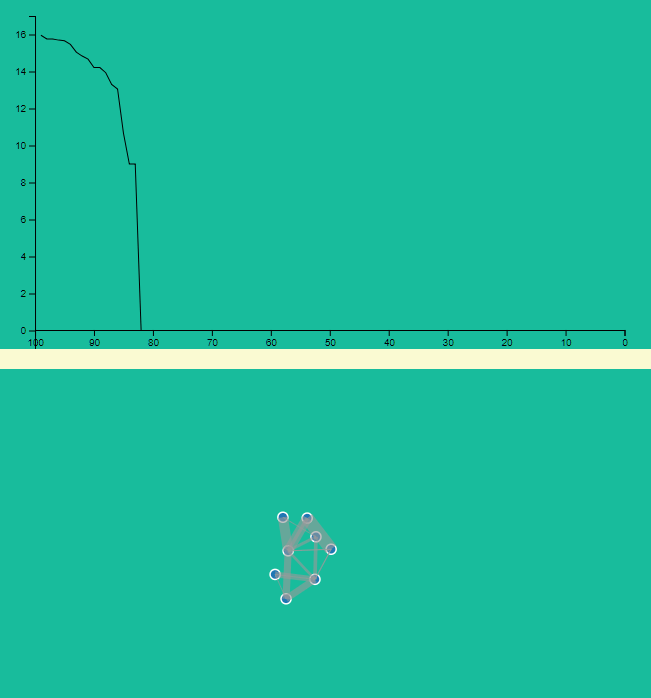11 个版本
使用旧版 Rust 2015
| 0.2.1 | 2018 年 5 月 28 日 |
|---|---|
| 0.2.0 | 2018 年 5 月 15 日 |
| 0.1.8 | 2016 年 11 月 20 日 |
| 0.1.6 | 2016 年 10 月 17 日 |
| 0.1.0 | 2016 年 7 月 31 日 |
#451 in 机器学习
59KB
1.5K SLoC
Rust NEAT
拓扑结构增加的神经进化 NEAT 的实现 http://nn.cs.utexas.edu/downloads/papers/stanley.ec02.pdf
此实现使用 连续时间循环神经网络 (CTRNN) (Yamauchi and Beer, 1994)。

运行测试
为了加快测试速度,请使用 --release 运行它们(XOR 分类/简单示例应少于 1 分钟)
cargotest --release
运行示例
cargorun --release --examplesimple_sample --功能=遥测
然后访问 https://:3000 以查看神经网络如何进化

示例用法
创建新的 cargo 项目
将 rustneat 添加到 Cargo.toml
[dependencies]
rustneat = "0.1.5"
然后使用库,例如,要实现上述示例,请按如下方式使用库
extern crate rustneat;
use rustneat::Environment;
use rustneat::Organism;
use rustneat::Population;
struct XORClassification;
impl Environment for XORClassification {
fn test(&self, organism: &mut Organism) -> f64 {
let mut output = vec![0f64];
let mut distance: f64;
organism.activate(&vec![0f64, 0f64], &mut output);
distance = (0f64 - output[0]).abs();
organism.activate(&vec![0f64, 1f64], &mut output);
distance += (1f64 - output[0]).abs();
organism.activate(&vec![1f64, 0f64], &mut output);
distance += (1f64 - output[0]).abs();
organism.activate(&vec![1f64, 1f64], &mut output);
distance += (0f64 - output[0]).abs();
(4f64 - distance).powi(2)
}
}
fn main() {
let mut population = Population::create_population(150);
let mut environment = XORClassification;
let mut champion: Option<Organism> = None;
while champion.is_none() {
population.evolve();
population.evaluate_in(&mut environment);
for organism in &population.get_organisms() {
if organism.fitness > 15.9f64 {
champion = Some(organism.clone());
}
}
}
println!("{:?}", champion.unwrap().genome);
}
开发
使用以下命令检查代码风格指南
rustup component add rustfmt-preview cargo fmt -- --write-mode=diff
感谢
感谢 Noun Project 上的 Delwar Hossain 提供的图标 nerves
依赖关系
~1.3–4MB
~77K SLoC